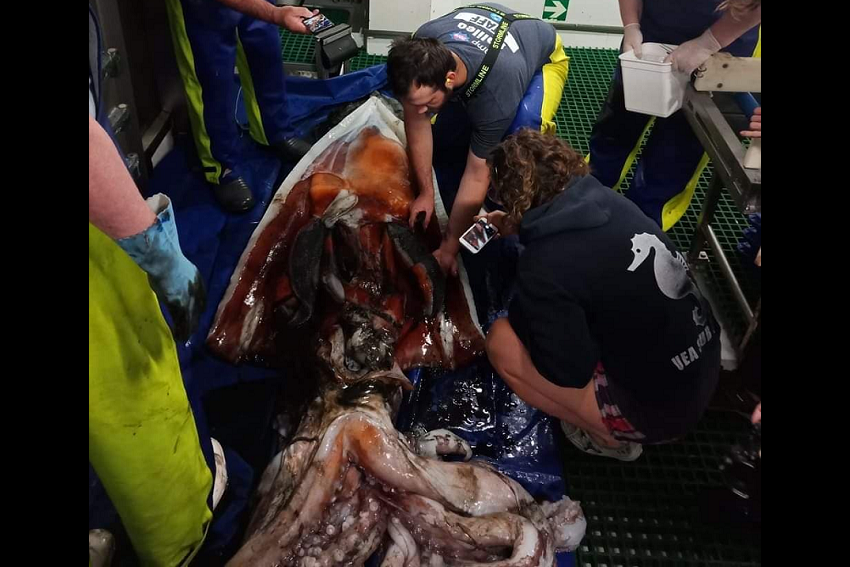PhD student makes the cut with big squid

Being hauled from his sleep to dissect a just-caught giant squid was a dream come true for AUT PhD student Ryan Howard. Freshly arrived from the US to study marine biology under AUT’s Dr Kat Bolstad, it was his first encounter with the huge species and something he'd wanted to do since he was 12.
Dr Bolstad had arranged for Ryan to join the NIWA (National Institute of Water and Atmospheric Research) research vessel Tangaroa during its month-long January voyage on the Chatham Rise, to collect samples for his PhD research on the anatomy of deep-sea squid eyes.
The giant squid (Architeuthis dux) and several glow-in-the-dark sharks were surprise finds for NIWA scientists surveying hoki. When they spotted huge tentacles in a trawl net pulled from a depth of 442m at around 7am, Ryan was asleep, having worked a 3pm to 3am shift.
“When someone came and woke me, I couldn’t believe it. I was still waking up but really excited.” He says at 4-5 metres long it was still on the small side, but the biggest he’d ever seen. “It took six or seven of us to carry it. Having [NIWA fisheries scientist} Darren Stevens allow me to run the dissection was great. I got really lucky.”
Because there are several fully intact giant squid specimens on mainland New Zealand, the crew decided to take nearly 50kg of samples of the scientifically valuable bits including the eyes, head, stomach and reproductive organs. Stevens says NIWA researchers catch a giant squid about once a decade.
It was the ideal catch for Ryan, who having done bachelor’s and master’s degrees at UC, Santa Cruz and San Francisco State University, came to AUT to research photoreceptors in the retinas of deep-sea squids.
“We think the growth of these photoreceptors may be disproportionate to the growth of the rest of the eye and this might be a mechanism that triggers the squid to move from shallow water to deeper.
“Some species spend their entire lives in deep water, and some start shallow and descend. It could be that retinal development determines which environment the squid wants to live in, and this could be consistent across species. We don’t know yet.”
Ryan says he has always harboured a fascination for cephalopods (squid, cuttlefish, octopus, nautilus), their camouflage behaviour and how they perceive each other and their prey.
“I’ve always been interested in biology, how life works and how evolution can create different solutions to the challenges of living; especially in the weirder species. When I was nine years old, I joined a science club at my elementary school, and we got to do a squid dissection. I was fascinated by this organism which was so alien. I got to take home the ink sac and the eye but when I walked in the door to our house I tripped and dropped squid ink all over the floor.”
He says someday he’d like to be a professor at an institute and have his own cephalopod lab. He also has a background in science camps for children and would like to open his own science camp one day.